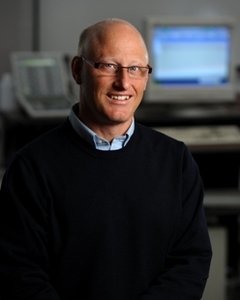Glen Niebur

Professor and Chair, Aerospace and Mechanical Engineering; Director, Bioengineering Graduate Program
University of Notre Dame
The Notre Dame Tissue mechanics laboratory studies the mechanical properties of skeletal tissues to better understand their fitness for function, and to determine how mechanical stimuli affect cellular response. Two current studies are related to osteonecrosis of the jaw and the role of mechanics in metastatic engraftment of tumor cells in bone marrow.
Bone metastasis: Many cancers metastasize (migrate, attach, and grow) to bone marrow. The phenomenon has been attributed to the marrow providing "fertile soil" for cancer cells to grow in. Although this is an apt analogy, it provides little insight into the mechanism of the disease. Metastases are problematic, because they are difficult to detect inside the bone, where x-ray or MRI signals are not sufficient to differentiate the tumor from the normal tissue. Typically the first detection occurs when the patient experiences pain, or serious degeneration of the bone. Our group is collaborating with Dr. Laurie Littlepage at Notre Dame and Laoise McNamara at the National University of Ireland, Galway to study the interactions of bone cells and cancer cells during normal bone homeostasis compared to periods of loading or unloading.
Mechanobiology of cancer cell migration: We study the biological effects of mechanical stimuli applied to cells. Cancer cells move at different speeds when growing on or in materials that have different stiffnesses, porosity, or other properties. However, during normal daily activities, our bodies are subjected to different forces that are supported by our bones, muscles, and other organs. These forces cause cells to be pressed against supporting structures, moved relative to one another, or otherwise deformed, which can affect their biological activity. We do not know if these mechanical signals affect cancer cell migration when the underlying material or tissue is regularly deformed by loading. We are using various culture systems with 2-D and 3-D environments to study these effects.